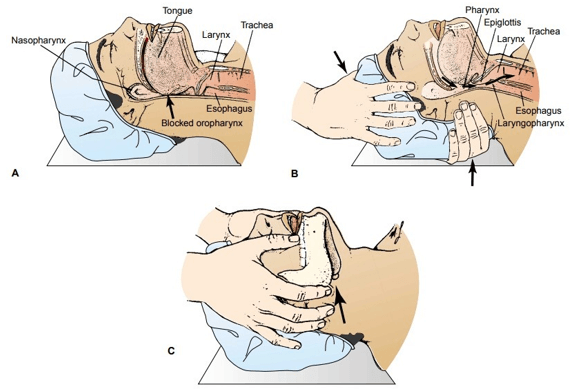A nurse is caring for a newly admited older adult client.
Nurses' Notes
Day 1, 12:00:
Transferred to medical-surgical unit from emergency department (ED) for continued care following a closed reduction and immobilization of a fracture of the right arm. Accompanied by adult child.
Client in visibly soiled night clothes with multiple stains, including what appears to be dried blood. Hair, teeth, and fingernails unclean. Strong body odor noted. Bruising of various stages noted around upper arms, back, shoulders, and neck area.
Client is soft-spoken, speaks almost in a whisper, does not make eye contact with nurse.
Client looks at their child before answering the nurse's questions and, when asked how the injury occurred, mumbles "I don't know. Ask them." Client's child states, "He gets confused sometimes. I can answer your questions."
Which of the following interventions should the nurse recommend to include in the client's plan of care?
Select all that apply.
Tell the client's child that they will be reported for maltreatment of the client.
Ask the client's child to provide details regarding the client's fractured arm.
Discuss respite care options with the client's child.
Speak to the client privately.
Provide legal advice to the client regarding power of atorney.
Correct Answer : B,C,D
The correct answers are b, c, and d.
a. It is not appropriate for the nurse to threaten the client's child with reporting for maltreatment without
further assessment and evidence.
b. Asking the client's child to provide details regarding the client's fractured arm will provide additional information about the client's injury and help the nurse assess the potential for abuse or neglect.
c. Discussing respite care options with the client's child may help alleviate any caregiver stress or burden, and ensure the client's continued care and safety.
d. Speaking to the client privately will help establish trust and rapport, and allow the client to disclose any concerns or issues that they may not feel comfortable sharing in front of their child.
e. Providing legal advice regarding power of atorney is not within the scope of nursing practice and should be referred to a legal professional. Additionally, the client's capacity to make decisions and appoint a power of atorney should be assessed before providing such advice.
Nursing Test Bank
Naxlex Comprehensive Predictor Exams
Related Questions
Correct Answer is ["C","D","E"]
Explanation
When managing oxygenation for a client in a PACU, the nurse should take several actions. The nurse should add a humidifier to the oxygen device to help prevent dryness of the nasal passages¹.
The nurse should also encourage the client to perform deep breathing exercises to promote oxygenation¹.
Additionally, the nurse should examine the client's nail beds for signs of cyanosis, which can indicate inadequate oxygenation¹.

Correct Answer is D
Explanation
Choice A Reason:
Documenting the infiltration is important for the client's medical record, but it should not be the first action when infiltration is suspected.
Choice B Reason:
Elevating the arm can help reduce swelling, but it should come after stopping the infusion.
Choice C Reason:
Applying a warm compress can help with comfort and may be done after stopping the infusion, but it is not the first action.
Choice D Reason:
Stop the infusion is correct. When a nurse observes signs of infiltration around an IV insertion site, such as edema and coolness of the skin, the first and most important action is to stop the infusion immediately. Infiltration occurs when the IV fluid leaks into the surrounding tissue instead of going into the vein. Stopping the infusion prevents further damage to the surrounding tissue and minimizes the risk of complications.
Whether you are a student looking to ace your exams or a practicing nurse seeking to enhance your expertise , our nursing education contents will empower you with the confidence and competence to make a difference in the lives of patients and become a respected leader in the healthcare field.
Visit Naxlex, invest in your future and unlock endless possibilities with our unparalleled nursing education contents today
Report Wrong Answer on the Current Question
Do you disagree with the answer? If yes, what is your expected answer? Explain.
Kindly be descriptive with the issue you are facing.
